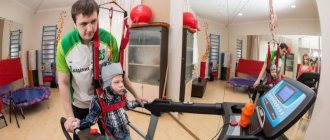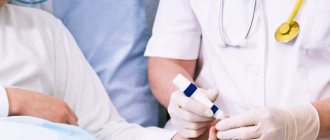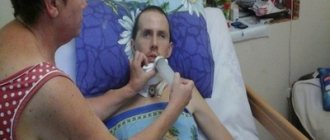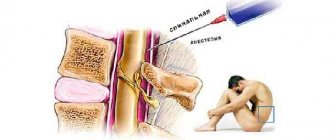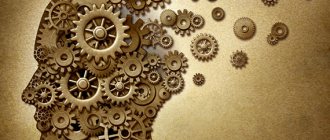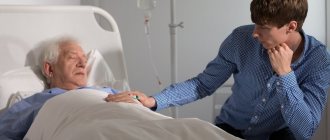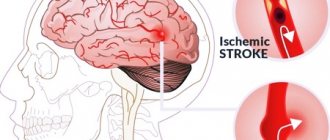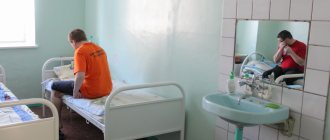What are we doing wrong?
“In our country it is very difficult to get an honest answer,” says pediatric neurologist Anna OSTROVERKHOVA .
– Parents have a vague idea of what results they can expect from rehabilitation, they seize every opportunity to show their child to a “fashionable” doctor, get a second (read: “one hundred and fifth”) opinion, they look for those who promise to put the child on his feet, sometimes giving his last money to miracle procedures, magic medicines. Most parents believe that everything depends on perseverance and intensity of activities: if you actively engage, then the child can be “stretched” and he will walk. Behind the idea of restoring the child, the child himself is lost.
His entire childhood passes under the banner of rehabilitation; often there is no time left for childhood itself: endless painful and completely ineffective injections of nootropics and vitamins, courses of useless massage, exercise therapy through pain and tears. Very often, efforts are made in completely the wrong direction: complex and ineffective activities are carried out, and there is not enough strength, time, or understanding for simple but vital things, or understanding that these actions are the only thing the child really needs.
I see children with severe cerebral palsy (level V according to GMFCS), who are “treated” all their lives, receive courses of nootropics and drugs that improve cerebral circulation, and receive monthly massages. After 10-14 years, the parents of a child with tetraparesis, with severe contractures, with spastic dislocations/subluxations of the hips, severe pain, severe underweight have only one request: to remove tone and contractures, so that the child does not suffer from pain, so that there is a little easier to care for. They no longer expect him to speak or even learn to hold his head up.
Why are there no such “neglected” children (whom our parents desperately “treated” all their lives) in developed countries? What do they do differently from us?
Firstly, parents receive a detailed diagnosis that determines the level of the child’s motor and communication functions. Secondly, knowing the degree of impairment of motor functions on the GMFCS scale, doctors determine the rehabilitation prognosis and potential of the child and honestly inform his parents, without feeding the parents’ unrealistic dreams and hopes for the child’s full recovery. Thirdly, adequate rehabilitation goals are chosen.
In the example described above, the child will most likely be placed on a baclofen pump to reduce tone, surgical treatment is possible to reduce pain, parents will use special positioning techniques to prevent contractures, the child will receive adequate nutrition, and will undergo medical examinations, including x-rays of the hip joints. The family will be provided with psychological support, parents will be taught alternative ways of communicating with the child.
But this is another illustration of the fact that a bitter truth is better than a sweet lie. Yes, the child will also not have the ability to move independently and perform purposeful actions, but he will be of adequate weight, without contractures, dislocations and pain, most likely he will have the strength for non-verbal communication, and it will be much easier for parents to care for him in adolescence."
Who is at risk?
Factors that indicate an increased risk of developing cerebral palsy during pregnancy include:
- Multiple pregnancy and death of one of the fetuses.
- Low birth weight – less than 2.5 kg.
- Premature birth (before 28 weeks). The earlier the birth occurs, the higher the likelihood of developing cerebral palsy.
An increased risk of developing cerebral palsy during childbirth is associated with the following factors:
- Breech presentation of the fetus.
- Rapid birth.
- Narrow maternal pelvis.
- Large fruit.
- Excessively strong labor activity.
- Prolonged labor.
- Discoordinated labor activity.
- Long anhydrous period before childbirth.
- Umbilical cord entanglement.
Premature birth increases the risk of developing cerebral palsy in a child.
Photo: wavebreakmedia_micro / freepik.com Also, the likelihood of developing cerebral palsy after childbirth increases in the presence of the following diseases and disorders:
- Bacterial meningitis.
- Viral encephalitis.
- Severe or untreated jaundice.
Premature birth and prevention of cerebral palsy
Shemyatovskaya Olga Dmitrievna, neurologist at the DocMed clinic:
“The causes of cerebral palsy can be anything that has a negative impact on the developing brain of the fetus or newborn (premature birth, intrauterine growth retardation, multiple pregnancy, infections, asphyxia, untreated maternal hypothyroidism, congenital malformations, perinatal stroke).
Often a specific cause is not identified. Prevention measures:
- reducing the likelihood of premature birth;
- prenatal administration of magnesium sulfate to women at risk of preterm birth (reduces the incidence and severity of cerebral palsy according to research results);
- clamping the umbilical cord no less than 30-60 seconds after birth - in children who do not need emergency resuscitation measures (to reduce the risk of intraventricular hemorrhage);
- maintaining adequate ventilation (including starting mechanical ventilation on time);
- timely and adequate feeding;
- seizure control;
- treatment of any causes that worsen the condition;
- therapeutic hypothermia (improves survival and outcomes for babies with asphyxia).”
Principles of rehabilitation from the perspective of evidence-based medicine
Photo: Anna Galperina
Ideas about the rehabilitation of children with cerebral palsy in the post-Soviet space and in developed countries differ.
“We generally believe,” shares Anna Ostroverkhova, “that the treatment of cerebral palsy consists of eliminating the damage that led to the disease. If the cause of cerebral palsy lies in damage to brain tissue, then it is imperative to “help” the brain, trying to “patch” the lesion, prescribing medications containing extracts of the brains of pigs and cows, be sure to “improve” blood circulation and flavor the brain cells with vitamins. Well, physical methods of rehabilitation consist only of improving/developing impaired motor function, and include the appointment of massage to relieve muscle tone, passive gymnastics, and older children do exercise therapy with an instructor.
Rehabilitation of children under one year old looks something like this: first, the massage therapist actively massages tense muscles (as a rule, this brings pain and discomfort to the child, which makes him scream and strain even more), and then does gymnastics with the child, passively bending/extending his limbs, doing exercises in which the child has a “led” role, i.e., the movements that the child makes are imposed on adults, and do not come from the child.
It turns out that the child becomes an object on which various actions are performed.
At the same time, an insane amount of parental effort, effort, emotional and material costs are spent on these actions. But if we compare the condition after rehabilitation of our children with cerebral palsy and children with the same initial data in Europe, America or Australia, then, frankly, a suspicion creeps in that we are doing something wrong. Our model turns out to be less efficient.
The modern rehabilitation model is based on different principles.
Firstly, we accept the fact that the area of the brain responsible for certain movements is damaged and, most likely, there is nothing in its place (a cyst with cerebrospinal fluid, for example), we do not try to “resurrect” these cells by introducing brain cells animals to an anatomical zone located at the completely opposite end of the body, improve blood circulation in those areas that physically do not exist. Also, we accept the fact that the cells that remain alive are absolutely functional and there is no need to improve anything in them either, because they were not damaged and remained normal. And these are not just philosophical arguments and conclusions. These are the results of studies that have not proven the effectiveness (and also safety) of nootropics and others like them.
No one in developed countries uses nootropics to treat anything.
Secondly, we recognize the fact that man is a rather lazy creature and will not try to do something for which he is not motivated. You can passively perform some kind of manipulation with a child for as long as you like, but if he is not motivated to perform the movement, or it is performed with great protest on the part of the child, after completing the rehabilitation course this skill is unlikely to be consolidated. Therefore, we definitely motivate the child to perform the movement (for example, the massage therapist not only skillfully turns the child from his back to his stomach, controlling the child’s legs, but a bright toy is placed next to the child, which he tries to reach, i.e., motivation is created, and already during the process, the adult can show the child how to perform the movement correctly).
In other words, the child must understand what he is doing and why. And for the purposes of the rehabilitation course, it will not be “decrease in tone in the upper extremities and improve fine motor skills” that will be prescribed, but a specific action that the child must learn to perform. For example, “learn to bring a spoon to your mouth, eat 10 spoons of porridge on your own.” To do this, undoubtedly, you will need to work on your tone and motor skills. But these will all be auxiliary things for a clear purpose and with good motivation.
Thirdly, the rehabilitation program is written individually for a specific child and cannot be the same for children even of the same GMFCS level.
We recognize the fact that no two children with cerebral palsy are alike.
Even if the lesion is absolutely the same and the possibilities of movement are also absolutely the same, most likely these will be children with different temperaments and different living conditions. One will live in an apartment building with a ramp, and his priority will be to keep his balance while reaching for the elevator button, or pick up the intercom and open the door, and the other will live in a private house, where it will be important to learn to keep his balance while walking through his mother’s garden and climb up the stairs to the second floor of the house, for example.
Fourthly, you need to work with your child every day. Classes with specialists are very important, but will be ineffective if they are not reinforced every day. Rehabilitation is primarily the work of parents; the task of specialists is to help parents create a program and train parents to perform tasks that they can perform in everyday life without being specialists.”
Causes of cerebral palsy
Cerebral palsy in 57% of cases is associated with an anomaly or disorder of brain development that occurs before the child is born, approximately 40% is due to pathological childbirth. Only about 3% of all cases of cerebral palsy are associated with traumatic brain injury, neuroinfections or other pathologies that occur after childbirth. Also, in some observations, the cause of the pathology remains unknown.
Factors that can potentially lead to problems with brain development include:
- Pregnancy pathologies: fetoplacental insufficiency, premature placental abruption, preeclampsia and eclampsia, nephropathy in pregnant women, Rh conflict.
- Intrauterine infections: cytomegalovirus, rubella, toxoplasmosis, herpetic diseases, syphilis, gonorrhea.
- Somatic diseases of the mother: diabetes mellitus, hypothyroidism, congenital and acquired heart defects, arterial hypertension.
- Use of toxic medications during pregnancy: some antibiotics and hormonal drugs, cytostatics, barbiturates, sulfonamides.
Is there a connection between cerebral palsy and vaccinations?
Vaccines, like many other medicines, contain preservatives and auxiliary chemicals. They have a number of side effects and contraindications for use. However, there is no scientific evidence linking properly vaccinated mother or child with cerebral palsy.
When to see a doctor?
With cerebral palsy, timely diagnosis and early initiation of correction are important. Therefore, it is necessary to seek advice from a specialist at the first suspicion of the development of this pathology. Most often these are: disturbances in skeletal muscle tone, spontaneous movements, abnormal body turns, swallowing disorders and strabismus.
In most cases, individual phenomena, even if they are not associated with cerebral palsy, are alarming symptoms that can be caused by other serious pathologies.
How to distinguish physiological muscle tone from early signs of cerebral palsy?
Shemyatovskaya Olga Dmitrievna, neurologist at the DocMed clinic:
“Babies with the risk factors described above should be carefully examined and examined by a neurologist (perhaps more often than children without risk factors). Diagnosis is usually made between 12 and 24 months of age. Pathological tone differs from physiological tone in severity. But at an early age (up to 3-4 months), it is still very difficult to distinguish between them. It is important to note that although the cause of cerebral palsy does not progress, symptoms and functionality continue to develop as the nervous system develops, that is, signs of cerebral palsy may not be noticeable at 6 months, but become very prominent at 12 months.”
Forms of cerebral palsy
Cerebral palsy can take on different forms, including: spastic, dyskinetic, ataxic and mixed variants¹.
Spastic form
The most common type of cerebral palsy accounts for up to ¾ of all cases. The main manifestation is hypertonicity (increased tone) of skeletal muscles. The degree of severity can vary, from mild awkwardness, which is felt only with precise movements, to severe paralysis. Has 3 subspecies:
Hemiplegia
With spastic unilateral cerebral palsy (hemiplegia), an increase in muscle tone is observed in the right or left half of the body. The arms are usually more affected than the legs. Some patients experience delayed mental and speech development, and seizures may occur. At the same time, the opportunity to acquire the necessary motor skills is preserved.
Bilateral hemiplegia or tetraplegia (quadriplegia)
Spastic diplegia, or "Little's disease", is manifested by simultaneous damage to both arms or legs. In addition to hypertonicity, it is characterized by deformities and contractures (restrictions in joint mobility due to soft tissue pathologies), delayed development of speech and intelligence, visual and hearing impairments.
Diplegia
Double hemiplegia, or spastic tetraparesis, is accompanied by damage to all extremities, but often the severity of hypertonicity is higher in the arms. This form is often accompanied by strabismus and decreased visual acuity, hearing and swallowing impairment, speech and cognitive deficits, and epilepsy.
Figure 1. Subtypes of spastic forms of cerebral palsy. Image: rob3000/Depositphotos
Dyskinetic form
With the dyskinetic variant of cerebral palsy, involuntary movements occur, called hyperkinesis, which can be combined with both increased and decreased muscle tone. Clinically manifested by a violation of normal body posture and characteristic variants of hyperkinesis:
- Athetosis – slow, worm-like movements of the arms and legs.
- Chorea - fast and jerky movements in the limbs (video 1).
- Torsion disorders - atypical turns of the torso, head and changes in body posture.
Hyperkinesis is usually noticeable only during movements and completely disappears during sleep. As with other forms, speech, hearing and swallowing disorders often occur. Intellect, as a rule, does not suffer.
Video 1. Choreic hyperkinesis.
Ataxic form
The key manifestation of this form of cerebral palsy is impaired balance and coordination of movements, ataxia. This looks like sudden, imprecise movements, and an inability to walk smoothly. May be accompanied by tremor - involuntary shaking of the head or limbs. Intelligence deficits may be mild or profound.
Mixed variants of cerebral palsy
In some cases, the development of cerebral palsy is caused by combined or multiple brain lesions, which leads to the formation of mixed forms of the disease. The most commonly observed combinations are:
- Spastic-atactic.
- Spastic-hyperkinetic.
- Atactico-hyperkinetic.
